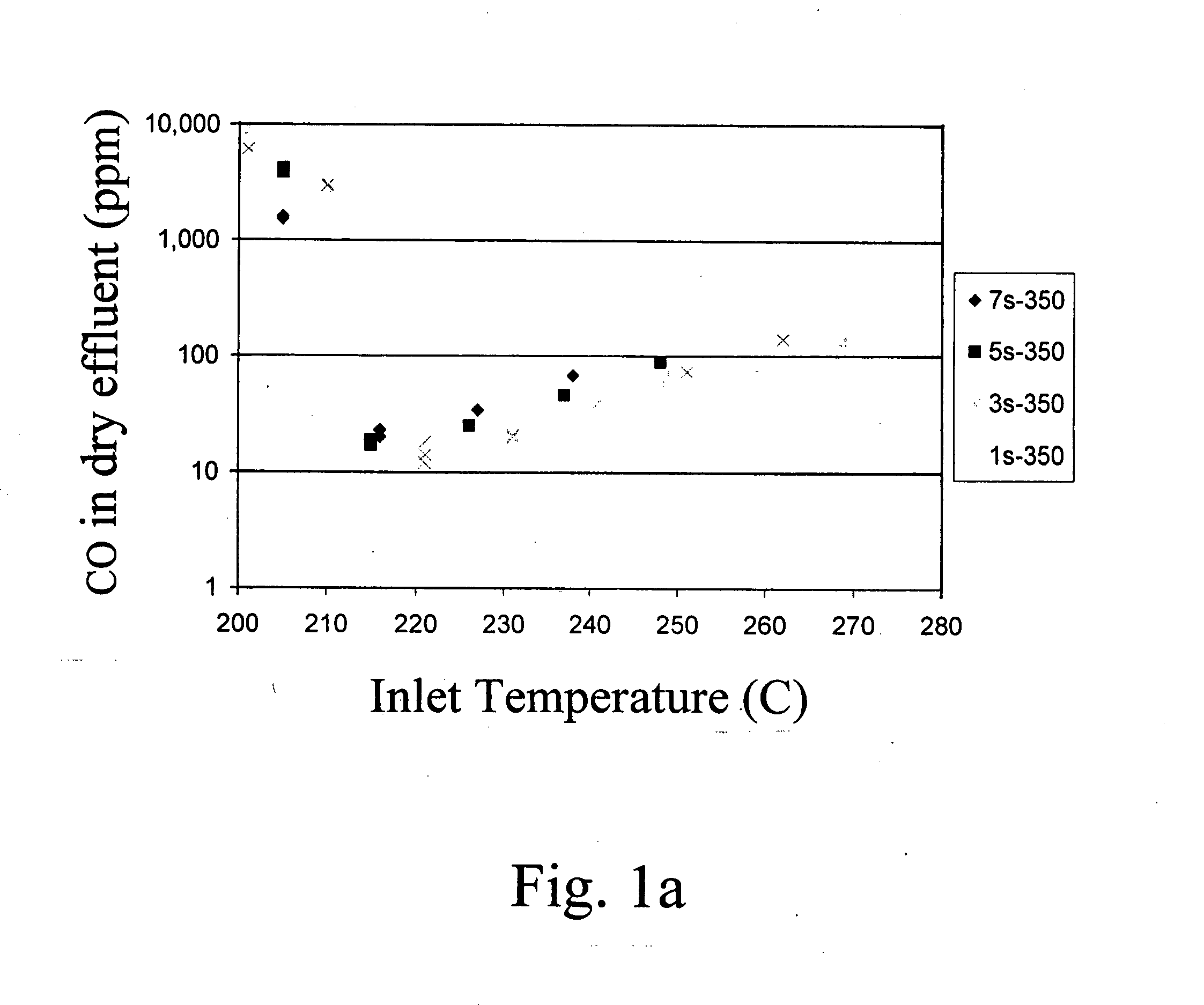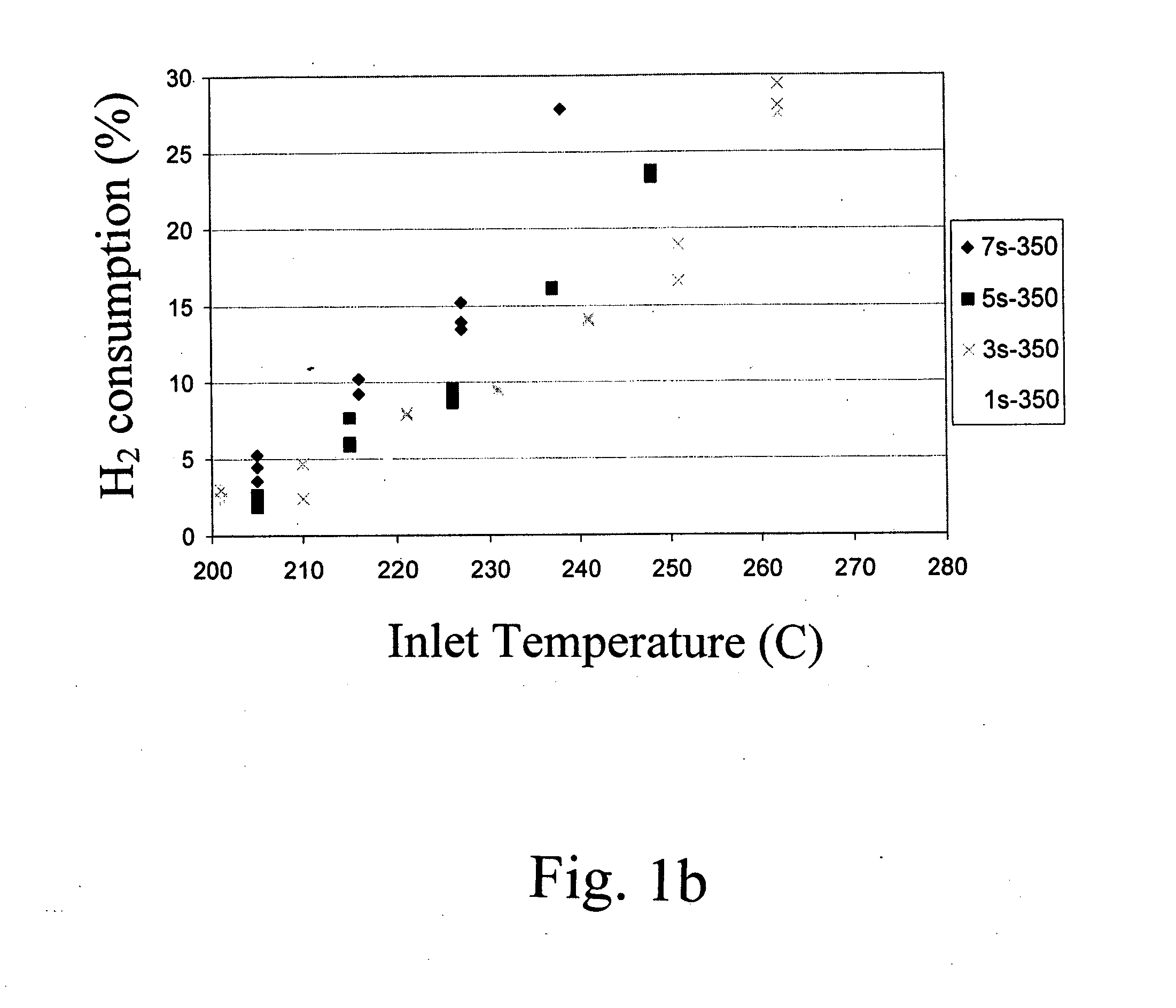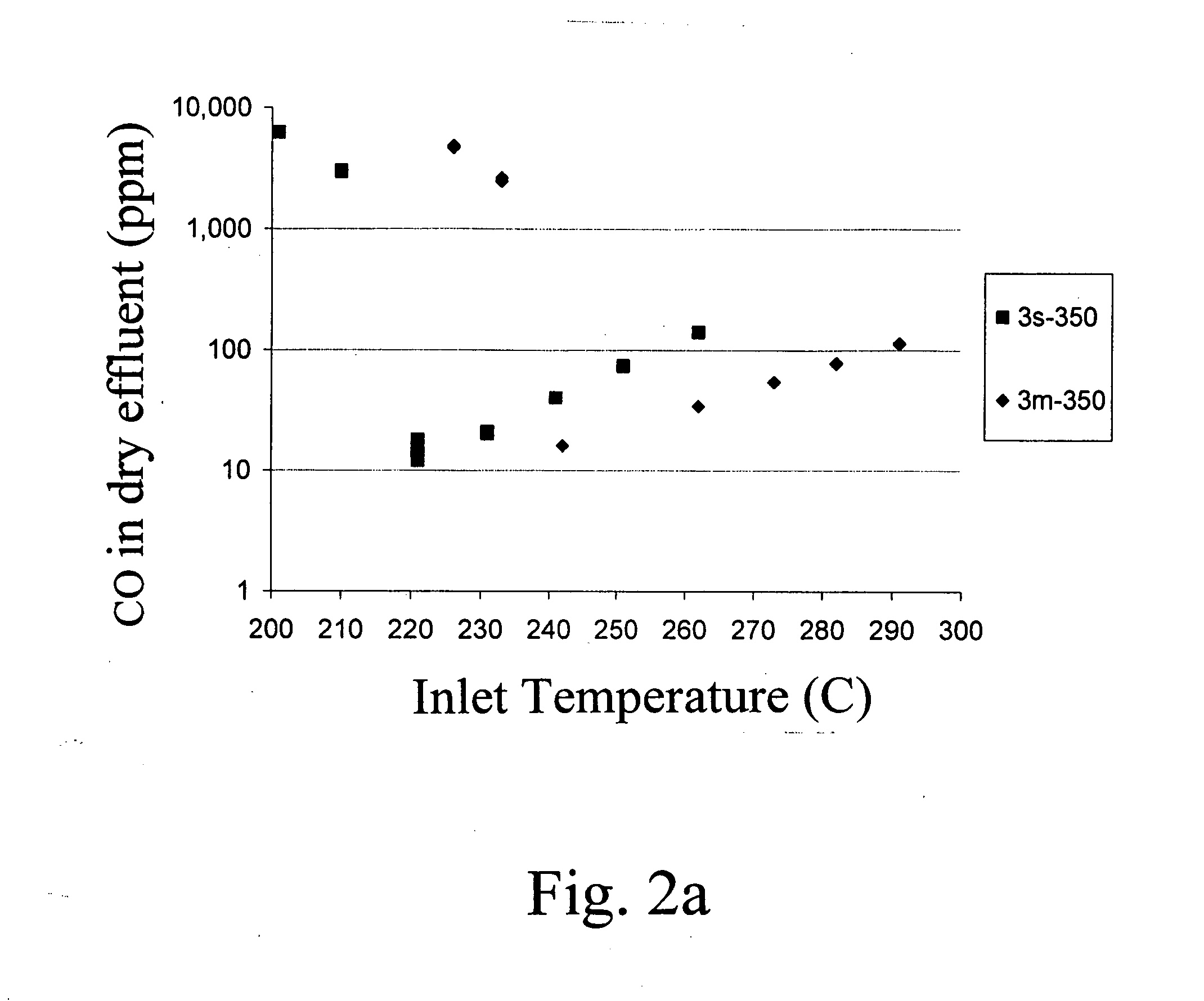Selective CO methanation catalysis
- Summary
- Abstract
- Description
- Claims
- Application Information
AI Technical Summary
Benefits of technology
Problems solved by technology
Method used
Image
Examples
examples
[0036] Supported metal catalysts were prepared by impregnation. A neutral γ-Al2O3 support (Engelhard Corp.) was pre-calcined at 500° C. for 2 hrs. A TiO2 P25 extrudate (Degussa) was calcined at 700° C. for 5 hrs. Zr(OH) powder (Aldrich) was calcined at 550° C. for 3hrs to form ZrO2. All supports were kept at 110° C. prior to the incipient-wetness impregnation step. Dilute and concentrated solutions of ruthenium were used requiring multiple and single-step impregnations, respectively. For the multi-impregnations on the alumina support and zirconia, and titania supported catalysts a ruthenium (II) nitrosyl nitrate solution (containing 1.5% Ru, Aldrich) was used. For the single impregnations on alumina support a concentrated ruthenium (III) nitrosyl nitrate solution (containing 9.9% Ru, Colonial Metals) was used. After each impregnation the wet sample was dried in air for at least 8 hour at 110° C. After the final impregnation and drying the sample was calcined at 350° C. for 3 hours. ...
PUM
| Property | Measurement | Unit |
|---|---|---|
| Temperature | aaaaa | aaaaa |
| Temperature | aaaaa | aaaaa |
| Temperature | aaaaa | aaaaa |
Abstract
Description
Claims
Application Information
 Login to View More
Login to View More - R&D
- Intellectual Property
- Life Sciences
- Materials
- Tech Scout
- Unparalleled Data Quality
- Higher Quality Content
- 60% Fewer Hallucinations
Browse by: Latest US Patents, China's latest patents, Technical Efficacy Thesaurus, Application Domain, Technology Topic, Popular Technical Reports.
© 2025 PatSnap. All rights reserved.Legal|Privacy policy|Modern Slavery Act Transparency Statement|Sitemap|About US| Contact US: help@patsnap.com



